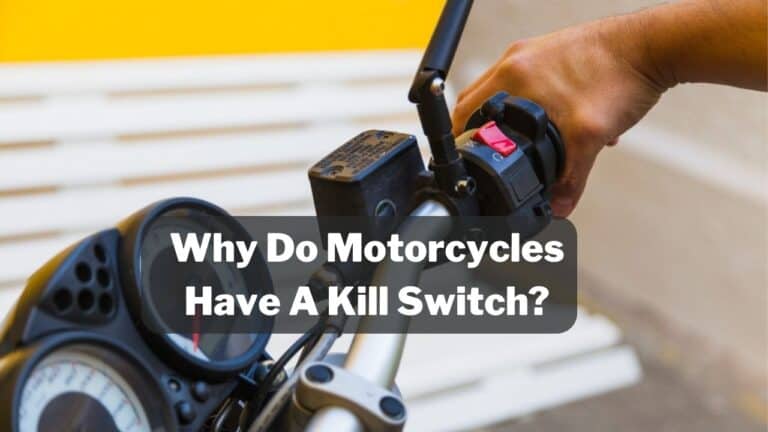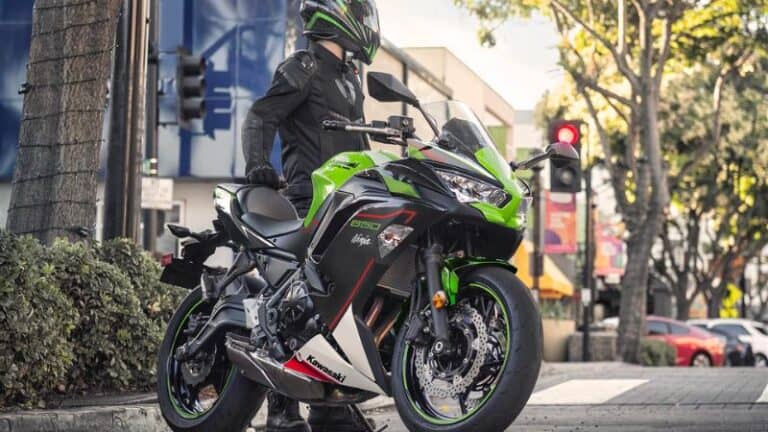Why Do Motorcycle Fuses Blow? – (A Simple Guide)

A motorcycle electrical system uses eight to nine fuse (ranging from 5 Amp to 40 Amp) for properly functioning all electrical parts and accessories.
Above that, motorcycle manufacturers provide 3 to 4 spare fuses for emergency use. You can replace the blown fuse with a spare one provided in the fuse box.
But why do motorcycle fuses blow? All fuses have a particular current rating (amperage); whenever extra current passes, the fuse heats up and melts to protect the accessories connected to that circuit. A motorcycle’s main fuse usually blows because of the sudden spike in current drawn from the alternator.
Table of Contents
- 1 What is the Use of Fuse in Motorcycles?
- 2 Why Do Motorcycle Fuses Blow?
- 3 Why is My Motorcycle Headlight Fuse Keeps Blowing?
- 4 How to Tell if Motorcycle Fuse Is Blown?
- 5 Simple Ways To Know Why Is Your Motorcycle Fuse Blowing
- 6 What To Do If the Main Fuse is Blown?
- 7 Where is the Fuse Box Located in Motorcycles?
- 8 Conclusion
What is the Use of Fuse in Motorcycles?
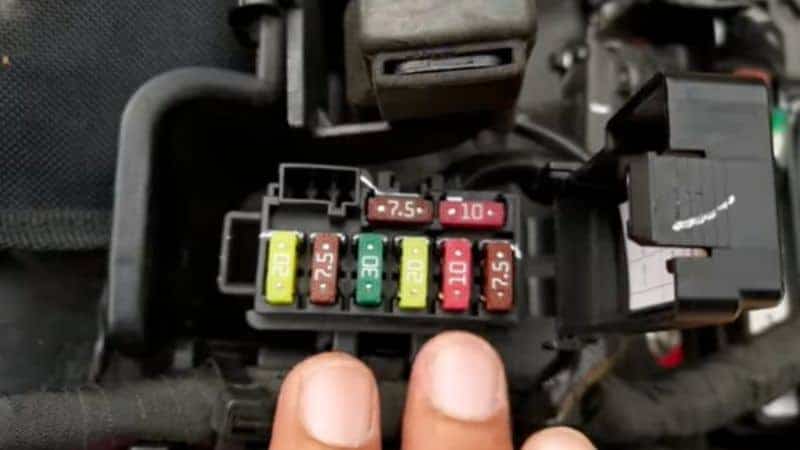
A fuse is an electrical safety device that provides overcurrent protection of an electrical circuit. A motorcycle has expensive electrical and electronic accessories that sometimes face a sudden spike in voltage and current from the alternator.
A fuse protects expensive electrical and electronic accessories like starters, lights, hazard systems, fuel injectors, electronic control units (ECU), ABS systems, etc., against overcurrent flow or a sudden spike in voltage.
Whenever your motorcycle alternator delivers high current in the circuit, the fuse melts before damaging the connected accessories. Replacing the fuse is easy and more economical than the whole circuit and accessories.
That’s why all motorcycle manufacturers provide a separate fuse box for all connected electric accessories.
Why Do Motorcycle Fuses Blow?
A motorcycle fuse blows if overcurrent is passed than the rated amperage or if there is a short circuit between the battery’s positive terminal and the ground (negative terminal). The fuse melts to prevent damage to the circuit or accessory attached to that circuit.
In other words, if the current passed through the fuse exceeds the rated amperage, then the fuse melts to cut off the current flow and prevent major damage to the circuit.
Also, the battery’s negative terminal is generally grounded with your motorcycle body. If any cuts on the positive terminal wire touch any metal parts of your motorcycle, the main fuse blows to prevent major damage.
Why is My Motorcycle Headlight Fuse Keeps Blowing?
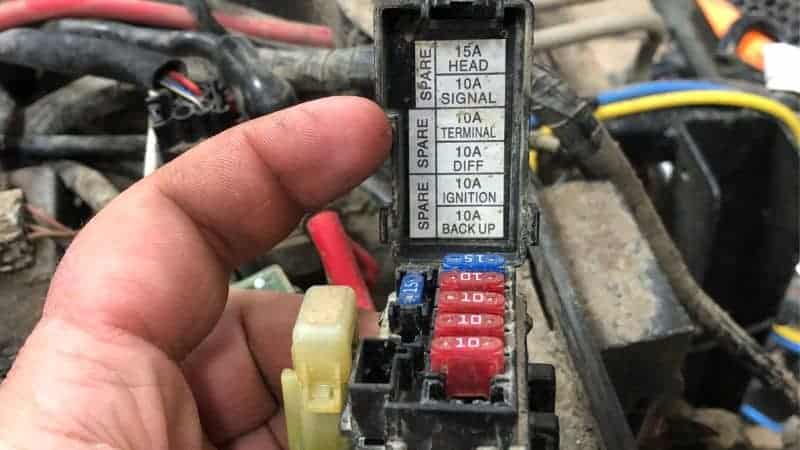
Last week, I was out for a motorcycle ride and noticed that my headlight was out. When I checked the fuse box, I found my headlight fuse was blown.
I replaced the fuse with a spare fuse and turned on the ignition key; the replaced fuse also blew. It was very frustrating.
So, I tried to figure out why the motorcycle headlight fuse kept blowing. The headlight fuse kept blowing because my headlight bulb was faulty.
I unplugged the headlight coupler, replaced the fuse, and turned on the ignition key. It didn’t blow this time. So, I understood that my headlight was the culprit. I replaced the headlight bulb, and the issue was resolved.
How to Tell if Motorcycle Fuse Is Blown?
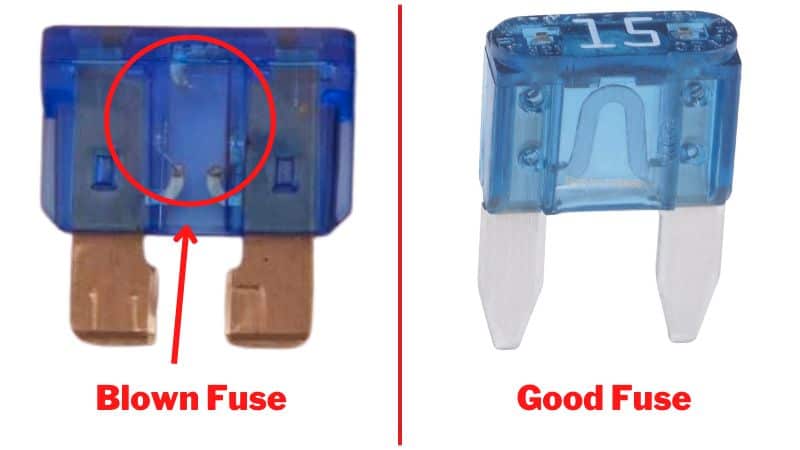
You can tell your motorcycle fuse is blown by inspecting the curved metal strip inside the fuse. Before inspecting the fuse, turn off the ignition key and remove the seat to locate the fuse box. If the curved metal strip inside the fuse is melted/broken, it means the fuse is blown, and you need to replace it with the same amperage spare fuse.
You can also test a fuse with the help of a multimeter. Set the multimeter position to the continuity checker and connect both terminals. If your multimeter shows no continuity, it means your fuse is blown, and you need to replace it.
Simple Ways To Know Why Is Your Motorcycle Fuse Blowing
Here’s how to identify the culprit that is blowing your fuse:
- Unplug aftermarket accessories because they increase the current drawn rather than the fuse’s rated amperage.
- Unplug the headlight coupler to see if the fuse is blowing. If not, your headlight is faulty. Replace the headlight bulb.
- Inspect for any short circuit to the ground and fix that.
What To Do If the Main Fuse is Blown?
If your main fuse is blown, in that case, your motorcycle will not start at all. Also, no other electrical accessories will function if the main fuse is blown. To fix this, you need to remove the blown fuse from the box and insert the spare fuse with the same amperage rating provided by the motorcycle manufacturers.
If no spare fuse is left in the box and no mechanic shop is around, you can connect both terminals with a thin metal wire (not too thick) and insert it back into its position. After reaching the home, replace that fuse with the same ampere rating.
Where is the Fuse Box Located in Motorcycles?
The location of the fuse box depends upon the motorcycle model — generally, the fuse box is located below the motorcycle seat where the battery is installed. However, in some older bikes, the fuse box is located underneath the handlebar.
Conclusion
A fuse is a safety device for electrical accessories that protects against a sudden spike in current/voltage or a short circuit. Replacing the fuse box is easier and more economical than the electrical circuit.
If your fuse keeps blowing, inspect the wiring and check for any cuts on the wire that touch the motorcycle’s body. Fix the wiring and replace the fuse with the same amperage rating for a hassle-free ride.


